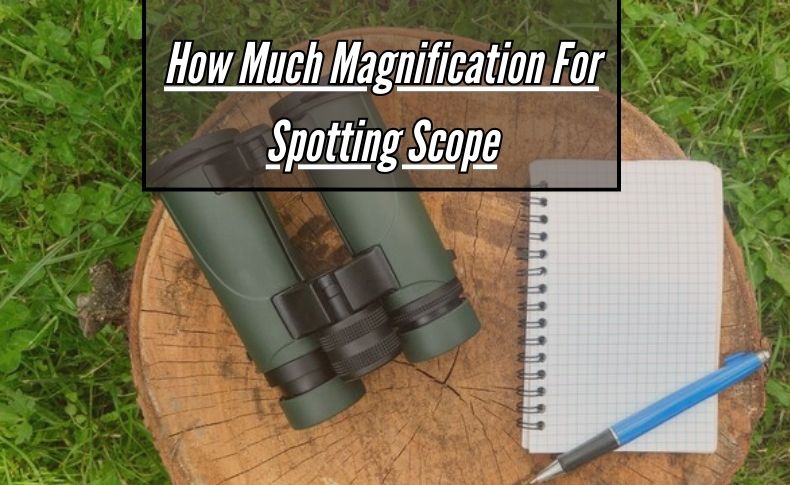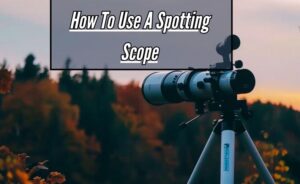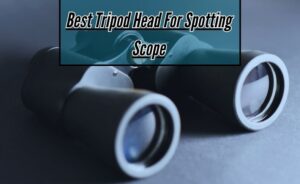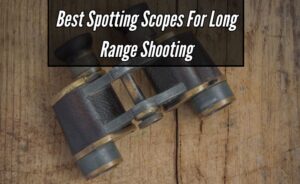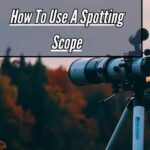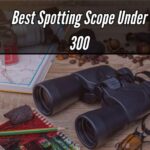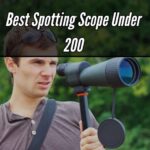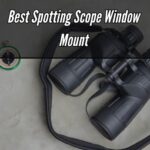Choosing the appropriate magnification for your spotting scope is similar to choosing the ideal lens for a camera; the goal is to accurately and precisely capture the event. It is crucial to understand the purpose for which you are using the magnification; whether you are searching wide-open spaces for animals or focusing on far-off targets for shooting, the choice of magnification can make all the difference in the world.
How Much Magnification For Spotting Scope? The purpose of your spotting scope will determine which magnification is best for you. For a wider field of view when making general observations, use a 20–40x magnification. For better zoom capabilities, if you enjoy shooting targets or closely observing birds, think about using a 40–60x magnification. But keep in mind that greater magnifications could necessitate more robust tripods and are susceptible to atmospheric fluctuations.
A broader field of vision is provided by a lower magnification, say 20–40x, which is perfect for broad vistas and general observation. However, choosing a greater magnification (40–60x) gives you the necessary zoom capability for close-up examination of far-off subjects. It’s important to keep in mind, though, that larger magnifications could require heavier tripods to prevent sway and might be more sensitive to meteorological factors. In this guide, we’ll explore the nuances of magnification selection, helping you make an informed decision for your spotting scope adventures.
Understanding Spotting Scope Magnification: Exploring the Basics
The world of spotting scope magnification is waiting for you! We’ll go over the fundamentals of how spotting scope magnification operates in this beginner’s guide.
Let’s go over the essentials in simple terms, from figuring out what influences magnification to selecting the ideal settings for your needs.
Spotting Scope Magnification Demystified
Spotting scopes provide a precise up-close view of far-off topics, making them indispensable instruments for hunters, birdwatchers, and nature lovers alike.
A spotting scope’s magnification, which controls how much closer an item appears to the unaided eye, is at the core of its powers. Comprehending the concept of spotting scope amplification is crucial to enhancing your visual pleasure.
Factors Influencing Magnification
A spotting scope’s ability to magnify depends on a number of elements. The optical design of the scope, which includes the positioning of the lenses and prisms inside the housing, is the most important component.
Furthermore, the diameter of the objective lens is important since it controls the amount of light that the scope can collect. Magnification is also affected by other elements like the design of the eyepiece and the caliber of the optics.
Balancing Magnification and Image Quality
A balance between magnification and image quality is crucial, even if extreme magnification may appear ideal. A loss of clarity and detail can occur from excessive amplification, which also causes image deterioration.
For this reason, selecting a spotting scope that strikes the ideal mix between magnification and optical quality is essential to getting crisp, clear images, particularly at a distance.
Understanding Magnification Numbers
The magnification range of spotting scopes is usually indicated by two digits on the label, such as 20-60x or 15-45x. The greatest magnification is shown by the second number, while the lowest amplification setting is represented by the first number.
A spotting scope with a 20–60x magnification range, for instance, can enlarge a picture up to 20–60 times its original size.
Choosing the Right Magnification for Your Needs
The type of observation you plan to do and the surrounding conditions are two important considerations when choosing the right magnification for your particular needs.
Lower magnification may be better for seeing birds or wildlife because it will allow you to track fast-moving subjects more easily and preserve a wider field of vision. Higher amplification levels, on the other hand, might be required for in-depth views of faraway objects.
Experimenting with Different Magnifications
Experimenting with different settings under varied observing situations is one of the finest methods to comprehend the impact of magnification. To observe finer details, progressively increase the magnification from lower starting points to ones with a larger field of view.
To maximize your viewing experience, pay attention to how the brightness and clarity of the image change at different magnification settings and make the necessary adjustments.
Finding the Balance: Choosing the Right Magnification for Your Spotting Scope
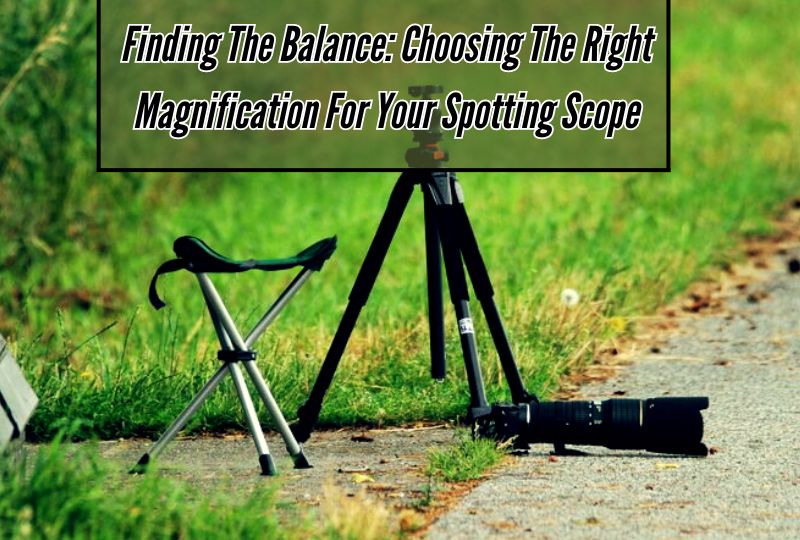
Achieving the ideal magnification for your spotting scope requires striking a balance between clarity and power. This extensive information will assist you in selecting the ideal option for your outdoor experiences.
Understanding Magnification Range
Understanding the possible range is crucial before choosing the perfect magnification. The magnification possibilities available with spotting scopes are usually rather broad, ranging from as low as 15x to as high as 60x. Every magnification setting has a distinct function, ranging from scanning large regions to focusing on far-off objects.
Considering Field of View
The field of view is an important consideration when selecting a magnification. Wider fields of vision are offered by lower magnifications, which makes them perfect for monitoring moving objects and scanning big regions.
Higher magnifications, on the other hand, provide smaller fields of view but enable close-up examination of far-off objects. Getting the best out of your spotting scope requires striking a balance between your demand for magnification and your desire to keep a wide enough field of view.
Assessing Image Quality
Maintaining the sharpness and clarity of the image is just as important as zooming in when it comes to magnification. Increased magnification can exacerbate atmospheric distortion, optical flaws, and vibrations, which will reduce the clarity of the image.
On the other hand, images at lower magnifications are typically crisper and more defined, especially when viewing conditions are less than perfect. Prioritize image quality above magnification when choosing a magnification to make sure you can clearly and precisely observe your subjects.
Assessing Field of View Dynamics
The dynamics of your field of view are crucial in choosing the right magnification for your spotting scope. It’s possible to achieve the ideal balance between enlarging your range of view and focusing on far-off objects by being aware of how different magnification levels impact it.
Matching Magnification to Purpose
The purpose of your spotting scope will determine the appropriate amplification in the majority of cases. A lower magnification may be more appropriate to capture the wider motions and behaviors of animals if your primary observation is of birds or other wildlife.
On the other hand, greater magnifications provide accurate targeting or a detailed inspection of far-off objects if you enjoy long-range observation or target practice. When selecting the right magnification level, take your unique hobbies and preferences into account.
Factors Affecting Optimal Magnification: Distance, Environment, and Purpose
When exploring the world of magnification, a number of important variables are there that affect how effective the procedure is. Gaining the best outcomes in a variety of applications requires an understanding of these elements.
Distance Matters:
The quality of magnification is largely dependent on the distance between the object being enlarged and the lens. If you get too close, the image can get distorted or blurry; if you get too far, details might disappear. Sustaining the proper distance guarantees accuracy and clarity in the enlarged picture.
Environmental Conditions:
The conditions in which magnification takes place can affect the procedure. The clarity and visibility of the enlarged object can be affected by various factors, including temperature, humidity, and illumination.
Sufficient illumination is necessary to capture details, and managing humidity and temperature keeps fragile specimens from being distorted or damaged.
Purposeful Adjustments:
Different levels of magnification are needed for different applications. Adapting the magnification to the particular needs is essential, whether it is for scientific investigation, industrial inspection, or creative pursuits.
Determining the proper magnification required to produce the desired result is aided by understanding the intended purpose.
Optical Quality of the Equipment:
The ultimate outcome is highly dependent on the caliber of the optical apparatus utilized for magnification.
When it comes to clarity, resolution, and precision, higher-quality lenses and magnifying devices outperform those of lower quality. Superior magnification outcomes are guaranteed by investing in top-notch optical equipment.
Resolution and Pixel Density:
The quality of the magnified image in digital magnification procedures is mostly dependent on resolution and pixel density.
Images with higher pixel densities and resolutions are crisper and more detailed, while images with lower resolutions may become pixelated and lose clarity. To get the best magnification effects, select equipment with sufficient resolution.
Magnification Technique and Methodology:
There are several methods and approaches used for magnification, and each has benefits and drawbacks. To get the best outcomes, it’s essential to comprehend these methods and select the one that works best for the given application.
The process of amplification can be improved by choosing the appropriate technique, whether it be digital, optical, or a combination of both.
User Skill and Expertise:
Ultimately, the efficacy of magnification is greatly influenced by the user’s competence and expertise. Accurate focusing, framing, and modifications are ensured by proper training and equipment operation expertise, producing better outcomes. Learning and practicing continuously is necessary to become proficient in the technique of magnification.
Low vs. High Magnification: Pros and Cons for Different Scenarios

When it comes to magnification in optics, whether low or high, each has its own set of advantages and disadvantages depending on the scenario. Understanding these differences can help you choose the right magnification for your specific needs.
Precision and Detail: Low Magnification
Wider fields of view are provided by low magnification lenses, which makes them perfect for photographing larger scenes with less distortion.
When catching the entire context is more important than accuracy, they do exceptionally well. Low magnification lenses, for example, enable photographers to capture large swathes of scenery with depth and clarity in landscape photography.
Close-Up Examination: High Magnification
High magnification lenses, on the other hand, offer unmatched clarity and detail when inspecting objects up close. In domains where minute details are crucial, like microscopy and forensic research, they are indispensable. High amplification enables in-depth specimen analysis, supporting scientific inquiry and study.
Depth of Field: Balancing Clarity and Perspective
When deciding between high and low magnification, depth of field is one factor to take into account. More of the scene can be in focus when using low magnification lenses because they often have a wider depth of field.
Conversely, high magnification frequently produces a shallow depth of field, which blurs the backdrop and highlights the subject. To get the ideal style or amount of detail in your photos, it is imperative that you comprehend this trade-off.
Portability and Versatility: Low Magnification
Practicality-wise, low magnification lenses are frequently more convenient to carry around and use. They’re ideal for a range of uses, from candid shots to documentary filming, thanks to their broader field of vision.
Low magnification lenses are also typically smaller and lighter, which makes them more convenient to transport and use in a variety of situations.
Specialized Applications: High Magnification
Specialized applications where it’s critical to capture minute details require high magnification lenses. Higher amplification makes it possible for scientists to examine microscopic structures in domains like material science and medical imaging, which has the potential to advance several academic topics.
Their specific qualities render them important in some fields, despite their lower versatility when compared to low magnification lenses.
Avoiding Over-Magnification: The Pitfalls of Excessive Zoom
The ease with which modern technology allows us to enlarge on several facets of life is indisputable in the digital age. But, over-zooming might have unintended implications and disadvantages that might not be immediately obvious—just as with any technology. Here, we examine the dangers of over-magnification and offer strategies for avoiding them.
Understanding the Temptation:
The need for more clarity and detail is what draws people to zooming in. There is always an urge to go deeper, whether it be by enlarging a picture to catch more subtle details or by enlarging a problem to discover a solution. It’s crucial to understand when this tendency goes too far in amplifying, though.
The Perils of Tunnel Vision:
Tunnel vision development is one of the main hazards linked to excessive zooming. We risk losing sight of the larger picture when we focus too intently on one specific detail.
Our inability to examine many viewpoints and come up with comprehensive solutions to our issues may result from this restricted focus.
Distortion of Reality:
The distortion of reality is another danger associated with over-magnification. Overly focusing on one area of life can distort one’s view of reality, just like zooming in too close on a photo can cause pixelation and loss of clarity. Keeping a balanced viewpoint is essential to avoiding slipping into this trap.
Straining Relationships:
A person’s personal and professional connections may suffer from excessive zooming. It is possible to miss someone’s larger assets and attributes when we place an excessive amount of attention on their small faults or defects. The basis of wholesome relationships may be undermined by this, which can lead to mistrust and misunderstanding.
Finding the Right Zoom Level:
It’s critical to choose the appropriate zoom level in every area of life to prevent the dangers of over-magnification. We must develop the ability to zoom in for clarity and out for perspective, much as a photographer modifies the zoom lens to get the ideal shot. By using a balanced approach, we can enjoy the finer points without losing sight of the overall picture.
Cultivating Mindfulness:
The secret to escaping the over-magnification trap is to cultivate awareness. We can avoid becoming bogged down in needless detail by keeping ourselves mindful of our thoughts and behaviors while being in the present moment.
In order to handle the complexity of life with grace and clarity, mindfulness teaches us to develop a sense of perspective and balance.
Unlocking Optimal Magnification: Enhancing Visual Precision with Your Spotting Scope
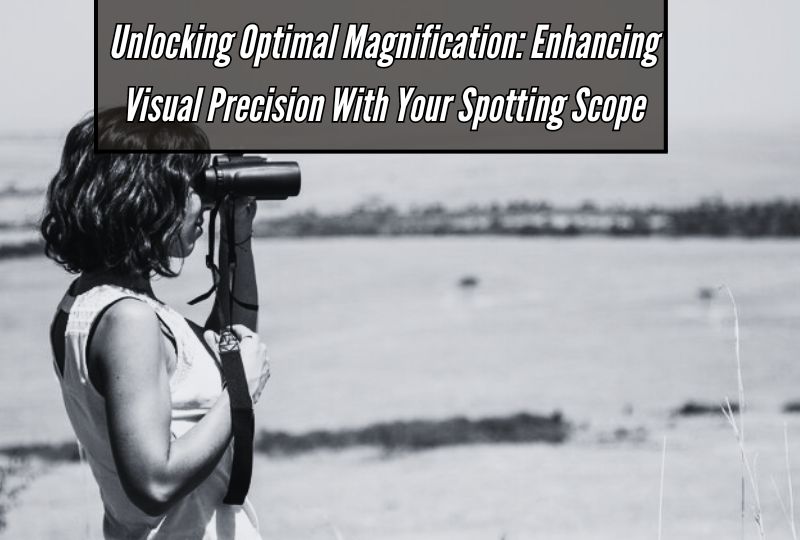
Discover the world of magnification with your spotting scope, a vital instrument for improving visual accuracy during observation.
This article examines how to best use magnification to bring out minute details, how to adjust for changing conditions, and how to work in tandem with other tools. Unlock your spotting scope’s capabilities for unmatched visual clarity.
Fine-Tuning Your Vision: Precision in Focus Adjustment
Perfecting your focus adjustment is a vital component of maximizing the magnification of your spotting scope.
Focusing precisely makes sure that the objects you’re observing are crisp and clear, facilitating close examination and analysis. The ability to control focus well can greatly improve the visual accuracy of your observations.
Exploring Advanced Optical Settings: Beyond Magnification
Investigating more sophisticated optical settings can improve your viewing experience even though magnification is the main factor in improving visual accuracy. There are more options for enhancing visual clarity and lowering distortion by experimenting with features like diopter adjustment, lens coatings, and eye relief. By being aware of these settings, you may enable your spotting scope to reach its maximum potential.
Navigating Terrain and Terrain: Adapting Magnification to Environmental Variables
To maximize visual precision, magnification must be adjusted to environmental factors including topography and weather. Magnification changes may be necessary for different terrains in order to accommodate for various distances and barriers.
Similar to this, adjusting the magnification settings to ensure ideal visibility may be necessary due to weather conditions like glare or fog. Acquiring proficiency in navigating these environmental elements guarantees reliable visual accuracy across a range of observation circumstances.
Precision in Purpose: Tailoring Magnification to Observation Goals
Tailoring magnification to suit specific observation goals is key to unlocking optimal visual precision. Whether your aim is wildlife photography, celestial observation, or target shooting, selecting the appropriate magnification level enhances your ability to capture detail and nuance.
Understanding the nuances of your observation objectives allows you to make informed decisions regarding magnification settings, ultimately maximizing visual precision.
Harmonizing Magnification with Field of View: Achieving Balance in Observation
Achieving a harmonious balance between magnification and field of view is crucial for optimizing visual precision. While higher magnification may offer increased detail, it often comes at the expense of a narrower field of view.
Conversely, lower magnification provides a wider field of view but may sacrifice detail. Striking the right balance between magnification and field of view ensures comprehensive observation without compromising visual precision.
Conclusion
In conclusion, determining the appropriate magnification for a spotting scope involves a careful balance between magnifying power and image clarity. While higher amplification offers detailed views, it can also be hindered by atmospheric conditions and image instability.
Optimal magnification depends on the intended use – lower magnifications suit wider fields of view for birdwatching or scenic observation, while higher amplifications are preferable for detailed target spotting in activities like astronomy or long-range shooting.
It’s essential to factor in the scope’s objective lens diameter and the user’s intended environment to make an informed decision about the right amplification for the best overall viewing experience.
Frequently Asked Questions(FAQs)
How much magnification do I need for spotting scope?
Selecting the right magnification for a spotting scope depends on your intended use. Generally, spotting scopes come with a range of magnification options, often denoted by two numbers (e.g., 20-60x). The first number represents the lowest amplification setting, and the second number represents the highest.
For most outdoor activities like birdwatching, wildlife observation, or target shooting, a spotting telescope with a amplification range of 20x to 60x should suffice. This range provides a balance between a wide field of view at lower magnifications and the ability to zoom in for finer details.
Is 10x magnification enough for a spotting scope?
Depending on what you require from a spotting scope, 10x magnification may be adequate. Compared to higher amplification settings, a 10x magnification provides a larger field of view. This may be useful for tasks like monitoring, casual wildlife watching, and viewing of landscapes.
However, 10x magnification might not offer the amount of detail needed for closer observations, such as birding or recognizing distant targets. A high-magnification scope with amplification range, such 20–60x, might be more appropriate in these circumstances.
What magnification is ideal for bird watching with a spotting scope?
A magnification range of 20 to 60x is usually good for birdwatching with a spotting scope. For seeing birds up close without compromising image stability, this range offers a decent zoom balance. It may be more difficult to find and follow birds at higher magnifications, which may also reduce your field of vision.
Furthermore important for a clean and detailed vision are elements like light transmission and lens quality. For a better experience when bird watching, think about getting a high-power telescope with high-quality optics and a flexible zoom range.
Is higher magnification always better for a spotting scope?
No, a spotting scope’s higher magnification isn’t always preferable. You can zoom in on far-off objects with high magnification, but there are trade-offs. A restricted field of view from extremely high amplification can make it more difficult to find and follow subjects.
Additionally, it can lessen the brightness and stability of the image, particularly in dimly lit environments. Take into account how amplification is balanced with other elements such as lens quality, light transmission, and your individual requirements. For a more useful and pleasurable viewing experience, choosing a spotting telescope with a modest and adaptable magnification range—typically between 20x and 60x—is frequently advised.
Does the objective lens size affect the magnification performance of a spotting scope?
Yes, a spotting scope’s magnification performance is affected by the size of its objective lens. The objective lens collects light and is essential to the brightness and clarity of the images seen through the scope. The quality of the images is improved by increased light entering the scope through a bigger objective lens.
It’s crucial to remember that, even if a larger objective lens improves performance, the eyepiece ultimately controls the magnification. The combination of the objective lens and eyepiece determines how successful a spotting telescope is overall. Thus, while a larger objective lens can enhance performance, the optical system as a whole must be taken into account for best outcomes.
Are there any drawbacks to using maximum magnification on a spotting scope?
Yes, there are disadvantages to utilizing a spotting scope at its highest magnification. There are trade-offs to take into account even if it lets you zoom in quite tight on far-off objects. The field of view narrows at maximum amplification, making it difficult to find and follow fast-moving objects like birds. Furthermore, there could be a drop in visual stability, particularly if the scope is handled, which would make the image unsteady or fuzzy.
Elevated magnification additionally intensifies atmospheric phenomena, including heat shimmer, that may cause the quality of the image to be distorted. For the best viewing experience, balance these aspects by using a amplification setting appropriate for the given circumstances and taking illumination and scope stability into account.

